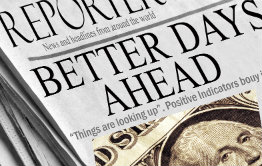Close Reading Resources: The What, Why and How
Need ideas in a hurry?
► Points of Entry by Nancy Frey and Douglas Fisher
► The #1 Close Reading Skill by Sarah Tantillo
► What #CloseReading Isn’t… by Christopher Lehman

In his blog post What Close Reading Actually Means, Grant Wiggins, creator of Understanding by Design, provided a helpful overview of the term’s recent history. He began by noting the origin of the current usage in K12 education, quoting from the Common Core standards:
Students who meet the Standards readily undertake the close, attentive reading that is at the heart of understanding and enjoying complex works of literature.
Wiggins went on to highlight How To Read A Book, a best-seller from 1940 by Mortimer Adler and Charles Van Doren, which recommended general questions meant to first help the reader understand a selection and then to evaluate it. Wiggins concluded with a call to educators:
So, ELA and English teachers – and history, math, art, and science teachers too: let’s teach kids the joys that come from discerning the richness in a great text, be it Frog and Toad, Plato’s Apology, Euclid’s Elements, or Picasso’s Guernica. I think you’ll be surprised how much a wise text can teach and reach even the most unruly kid – and, in the end, make them feel wiser, too.”
What close reading is and isn’t
At his Teach by Learning/Learn by Teaching blog in fall 2013, Christopher Lehman, author with Kate Roberts of Falling in Love with Close Reading (our review), wrote a 13-installment blog series, beginning with What #CloseReading Isn’t (Or At Least Shouldn’t Be) and finishing with #CloseReading is not THAT Important.
Lehman’s first post outlines what close reading isn’t, then suggests authors to follow, and concludes with a succinct definition and a brief guide to determine if students understand what close reading is and how to do it.
Throughout Lehman’s blog-a-thon, educators responded with their own experiences and strategies. As the blog series ended, Lehman wrote that close reading “is a method, a set of skills, that a teacher can choose (or not choose) to employ to match the needs and strengths of their students.”
Information and other complex text

In the same issue, Sunday Cummins considers What Students Can Do When the Reading Gets Rough, discusses specific methods to lead students to self-monitoring and adds suggestions for responding to inadequate monitoring. In Unlocking the Secrets of Complex Text Mary Ehrenworth comments,
For you are not setting out to tinker with kids’ reading skills, adding a strategy here or there. You are setting out to transform their ideas about what it means to read….Our job is to instill in students a deep sense of engagement with the intricacies of complex texts, to rouse them to see more in the texts they read—and to do this in a way that makes them want to read more. That means that readers need to feel their work paying off. Threatening them with hard state tests or future tasks in high school or college is not an effective teaching methodology (even if students will face these challenges). You can’t discipline students into becoming insightful.”
Ehrenworth includes suggested readings and a thorough discussion of methods for leading children to effective close reading. With a similar concern for building eager readers, Carol Ann Tomlinson draws from her experience as a novice teacher in One to Grow On / Invitations to Read, comparing her early inability to engage a student in reading to the range of strategies a current teacher brings together to help students read Machiavelli. ASCD includes comments from teachers in Tell Me About … / An Informational Text that Engaged Your Students. Several more articles are available in a recent issue of ASCD Express.
Teacher Vicki Vinson shows what can go wrong when schools select quick fixes. In a post at her blog To Make a Prairie, she relays student responses to this year’s “steady diet of close reading.” It isn’t pretty. Vinton compares what a purchased program can provide students to the value of teachers and their skills in observing students and relating to them.
MiddleWeb posts examine close reading
Literacy consultant Sarah Tantillo agrees with the writers mentioned above who stress the need for students to develop their own questions while reading. In a guest post adapted from her forthcoming book Literacy and the Common Core: Recipes for Action, she writes,
I’ve been reading a lot about ‘close reading’ lately. Some people say you should re-read the text. Some say you should mark the text up with a pencil. Still others say you should ask a particular set of questions; unfortunately, I can’t remember what those questions are. I’m not saying that any of these are bad strategies. I’m just saying they’re not the most important one. The most important skill you can teach your students is how to ask questions.”
In another MiddleWeb post, Tantillo notes that, although skimming might seem to be the opposite of close reading, it is a crucial if often overlooked Common Core skill for pulling information out of a text. She provides strategies to help students skim effectively.
Literacy coach Laura Robb, author of Unlocking Complex Texts, notes that many teachers are frustrated by Common Core directions to ignore prior knowledge when teaching students to analyze texts. In her guest post Teach Kids to Build Their Own Prior Knowledge, she recommends a proactive approach: show students how to do it for themselves. Tips included!

Also stepping outside the book, MiddleWeb’s Working Draft blogger and sixth grade teacher Kevin Hodgson uses What’s the Big Idea?, a philosophy website for middle schoolers, to guide his students through a close reading of movie and TV clips, exploring ethical questions, examining filmmaker’s intentions, and demonstrating that close reading isn’t always about text.
Bringing close reading to read alouds, Mary Tarashuk, who blogs at MiddleWeb’s Kids at the Cusp, reads a novel aloud to her fourth graders after lunch. New this year: she tries out several graphic organizers to help students probe deeper into the dramatic novel Red Kayak.
MiddleWeb reviewers look at Close Reading books
Ready for some close reading of your own? Here’s a selection of what MiddleWeb reviewers have had to say about recent books by educators.
• Teachers working to build complex texts into classes will welcome the framework for teaching comprehension in Laura Robb’s Unlocking Complex Texts: A Systematic Framework for Guiding Adolescents’ Comprehension, says Linda Biondi.

• Students will take the strategies from Notice & Note: Strategies for Close Reading by Kylene Beers and Robert Probst beyond their current classroom to strengthen their critical thinking and their enthusiasm about reading, says Sandy Wisneski. The authors discuss how to engage students in close reading in this video.
Learn more via video
To trade in reading for a little visual and aural learning, you can visit these videos. First up, college students demonstrate close reading using Dr. Seuss’s Oh the Places You’ll Go in a clip from Eberly Writing Center at Dickinson College.
Writing at Edutopia, Janice Dole provides links to a raft of video resources and her own strategies for teaching close reading with pre-service teachers.
The Teaching Channel offers several teacher-created videos for the middle grades. Topics include Brainstorming (students discuss text that supports their conclusions, useful for a class with English language learners), Text Graffiti (students move around the room to view snippets of upcoming reading and consider literary elements, characterization, conflict and other elements as a prelude to reading a whole piece) and the Jigsaw Method (groups of students consider aspects of a sample of argumentative writing.)
And finally . . .the close reading resources warehouse
MiddleWeb friend and master curator Larry Ferlazzo has brought together a broad selection of close reading resources. You can find his collection here.




































Hello,
We are a not-for-profit educational organization founded by Mortimer Adler and we have recently made an exciting discovery—three years after writing the wonderfully expanded third edition of How to Read a Book, Mortimer Adler and Charles Van Doren made a series of thirteen 14-minute videos—lively discussing the art of reading. The videos were produced by Encyclopaedia Britannica. For reasons unknown, sometime after their original publication, these videos were lost.
Three hours with Mortimer Adler and Charles Van Doren, lively discussing the art of reading, on one DVD. A must for all readers, libraries and classroom teaching the art of reading.
I cannot exaggerate how instructive these programs are—we are so sure that you will agree, if you are not completely satisfied, we will refund your donation.
Please go here to see a clip and learn more:
http://www.thegreatideas.org/HowToReadABook.htm
ISBN: 978-1-61535-311-8
Thank you,
Max Weismann, Co-founder with Dr. Adler
Susan,
I can’t thank you enough for all the reading resources! I can’t wait to read them all.
Rhonda